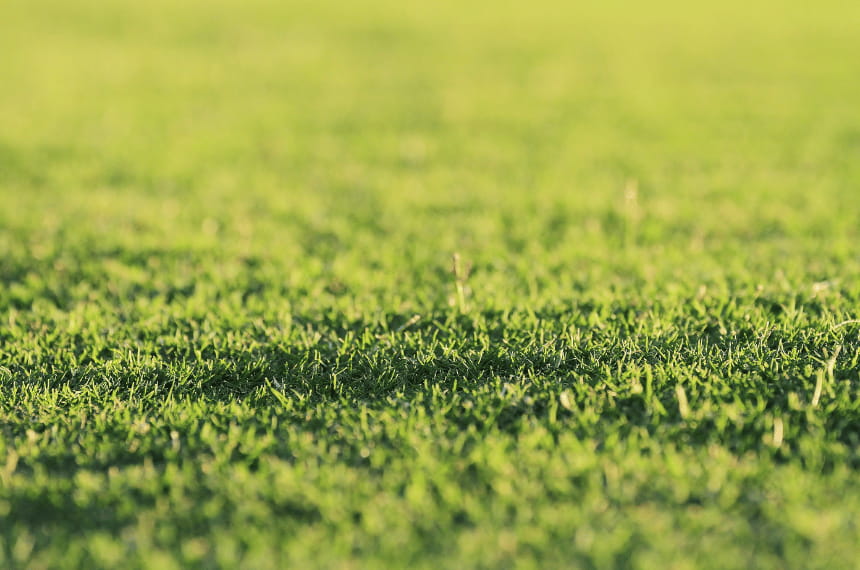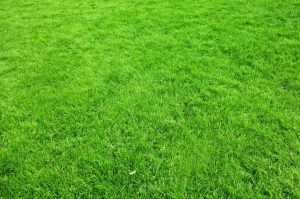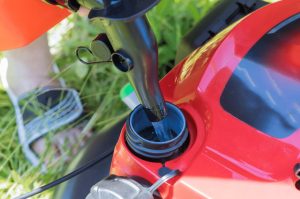Couch grass is a common sight in many environments, whether it’s on a cricket pitch or in a residential garden. Couch grass is popular among homeowners and landscapers due to its hardiness and luxuriant carpet-like look.
However, it may surprise you that there are numerous varieties of Couch grass, each with its unique traits and maintenance requirements. So, whether you’re a seasoned gardener, a landscape enthusiast, or merely considering Couch grass for your lawn, take a seat and join us as we explore the verdant world of these turf types.
What is Couch grass?
Couch grass, also known as Elymus repens, is popular for its fine texture, rich colour, and capacity to endure heavy traffic. It’s a rhizomatous grass which grows horizontally beneath the soil surface, swiftly spreading to form a dense cover.
Couch grass’s propensity to spread quickly makes it ideal for grass coverage, but it may also be invasive if not maintained properly. It is endemic to much of Europe and has spread to other parts of the world.
Many gardeners and landscapers prefer it because of its endurance and adaptability to various soil conditions and climates, as well as it’s ability grow quickly via runners (stolons).
Prevalence of Couch grass in Australia
Couch grass can be found throughout Australia, from the coast to the interior. It prefers disturbed areas like roadside ditches, pastures, farmed fields, and natural habitats, including grasslands, woodland borders, and riparian zones.
Couch grass grows swiftly and may outcompete native plant species, diminishing biodiversity. Furthermore, this plant’s dense mat can impede the germination and establishment of other plant species.
Because it is a valuable turf grass and a troublesome weed, management strategies typically depend on its role in a particular region. Control techniques may include targeted pesticide use, regular mowing, and preserving the health of native plant communities to reduce the probability of invasion.
Common types of couch grass
Couch grass comes in various colours, textures, and growth patterns. Some of the most prevalent types that we encounter frequently include:
- Bermuda Couch
- Wintergreen Couch
- Queensland Blue Couch
- Santa Ana Couch
- Greenlees Park Couch
- Nullarbor Couch
Below, we’ll take you through each of these in further detail so you can know what type of Couch grass would suit your backyard.
1. Bermuda Couch
Bermuda Couch, sometimes known as Bermuda grass, is renowned for its fine texture, which results in a dense, carpet-like turf. This grass is extremely drought-tolerant and wear-resistant, making it ideal for use on athletic fields, golf courses, and other high-traffic locations.
In our experience, Bermuda Couch thrives in warm, tropical, and subtropical settings and requires plenty of sunlight to keep its rich appearance.
2. Wintergreen Couch
Wintergreen Couch grass is distinguished by its brilliant green colour that lasts all year. This type is well-known for its disease and pest resistance, which results in fewer maintenance requirements.
Wintergreen Couch is frequently used in lawns, golf courses, and parks due to its attractive appearance. It thrives in a variety of climates, preferring full sun exposure. For more information, check out our comprehensive breakdown of Wintergreen Couch vs Sir Walter.
3. Queensland Blue Couch
Queensland Blue Couch is a native Australian grass known for its smooth, delicate leaf texture and distinctive blue-green tint.
Despite its name, it is not a true Couch grass but has many similarities. It grows well in tropical and subtropical climes and beautifies household lawns and parklands. Because it is less invasive, it is a popular choice for mixed-species lawns.
4. Santa Ana Couch grass
Santa Ana Couch is a fast-growing cultivar that prefers full sun. It has a delicate leaf texture and good wear tolerance, making it an excellent choice for lawns, golf courses, and sports fields.
Santa Ana Couch thrives in warm, temperate areas and retains its vigorous growth and lush appearance all year, as long as it is adequately watered during dry months.
5. Greenlees Park Couch
Greenlees Park Couch is well-known for its fine leaf texture and great wear tolerance, making it a popular choice for high-traffic sports fields, big public parks, and private lawns.
Its ability to quickly recover from harm and adapt to a wide range of soil conditions makes it extremely adaptable. It thrives in warm climates and requires full sun to stay healthy.
6. Nullarbor Couch
Nullarbor Couch grass, known for its fine leaf blades and dark green tint, adds a manicured look to any lawn. It is popular for golf courses and sports fields due to its outstanding drought tolerance and wear resilience.
Furthermore, it is equally appropriate for high-traffic household lawns or those seeking a premium, finely textured appearance. This grass thrives in warmer regions and requires full sun exposure to retain its rich colour.
Despite its great performance, Nullarbor Couch grass requires less watering and mowing, making it a sustainable choice for many landscapers and homes.
Cultivation and care for Couch grass in Australia
Several elements are critical to Couch grass’s effective growth and sustainability in Australia.
Ideal soil and climate conditions
Couch grass grows best in well-drained soil with a pH between 5.5 and 7.0. It enjoys direct sunlight but will tolerate moderate shade. It thrives in temperatures ranging from 25 to 30 degrees Celsius because it is a warm-season grass.
Watering, fertilising, and mowing
To reduce evaporation, you should ensure to water early in the morning or late in the evening. During the first month of establishment, couch grass requires frequent, shallow watering. Deeper, less frequent watering is recommended once the plant has matured to foster deep root growth.
Fertilisation aids in the maintenance of its lush, green appearance. During the active growth phase, particularly in early spring and late summer, a nitrogen-rich fertiliser should be administered.
Mowing regularly promotes Couch grass to grow laterally, resulting in a dense, uniform blanket. The recommended mowing height for home lawns is typically 25-30 mm and as low as 12 mm for sports fields.
Common pests and diseases
Couch grass is sensitive to lawn grubs and diseases such as dollar spot and leaf spot. To control these, monitor your lawn regularly, apply appropriate treatments as needed, and maintain good lawn health to build resistance to pests and diseases.
Comparing Couch against other grass types
To properly appreciate the significance of Couch grass, it is necessary to compare it to other popular grasses used in lawns and landscapes around Australia.
Couch grass vs. Buffalo grass
Couch grass is characterised by its thin, soft leaf texture and ability to recover fast from wear and tear, making it excellent for high-traffic areas such as sports fields and playgrounds. On the other hand, Buffalo grass has a larger leaf and a slower growth rate, making it less suitable for high-traffic areas but ideal for residential lawns. Unlike Couch grass, Buffalo grass may flourish in regions with as little as three hours of sunlight daily.
Couch grass vs. Kikuyu grass
Like Couch grass, Kikuyu grass grows fast and recovers quickly from harm. It has a rougher leaf texture and can withstand various soil conditions, making it a versatile lawn choice.
Kikuyu’s quick growth, on the other hand, can make it invasive, necessitating more regular mowing than Couch grass. Couch grass, with its finer texture and slower growth, could be a more manageable option for those looking for a low-maintenance lawn.
For a full breakdown, head to our guide on Kikuyu vs Couch to see the best option for your yard.
Couch grass vs. Zoysia grass
Zoysia grass is a drought-tolerant grass that grows slowly. It has fine to medium leaf texture, comparable to Couch grass, and is resistant to disease and pests. Because of its sluggish growth rate, Zoysia grass requires less mowing, but it also takes longer to establish and recover from injury. With its rapid growth and recovery, Couch grass may be a better alternative for places with a lot of wear and tear.
Conclusion
Couch grass is a popular choice for household lawns and commercial landscapes, as evidenced by its different kinds, such as the Nullarbor and Queensland Blue, and its widespread distribution in Australia.
However, like any other plant, the successful production of Couch grass necessitates recognising and addressing its unique requirements, which range from soil and climate conditions to disease management.
You can ensure a lush, growing lawn that adds beauty and functionality to your outdoor space by making an informed decision and offering meticulous upkeep.






